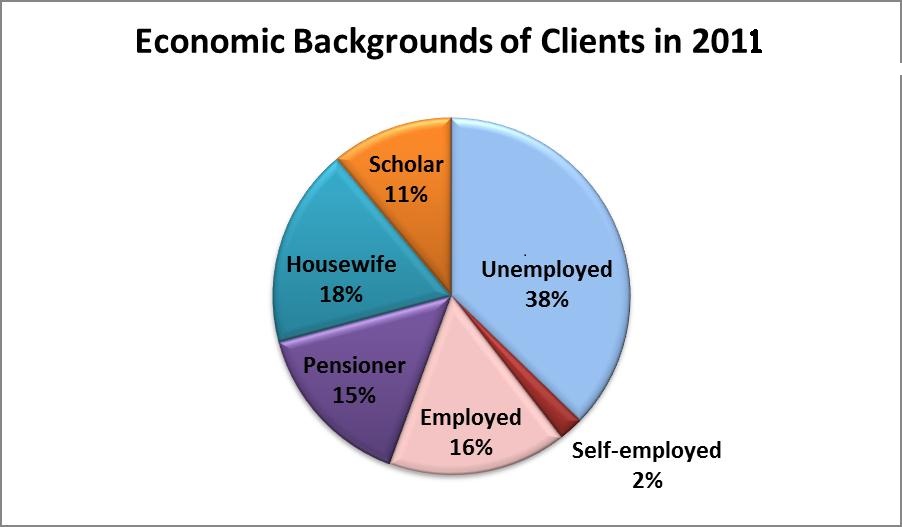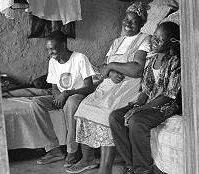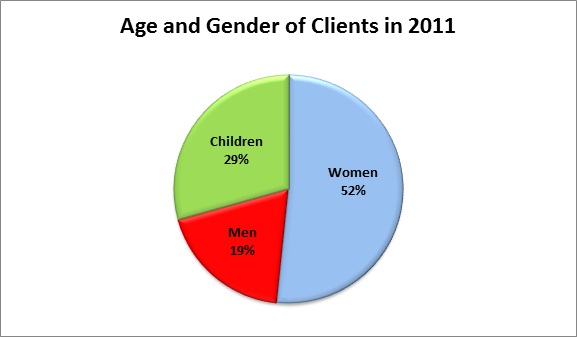 When attending to clients, coordinators record their details, including their social and economic background. This is to provide a basis for research and to understand whether the support centres are reaching all groups: if certain sections of communities are not coming to the centres, then more presentations and focus groups are conducted with them.
When attending to clients, coordinators record their details, including their social and economic background. This is to provide a basis for research and to understand whether the support centres are reaching all groups: if certain sections of communities are not coming to the centres, then more presentations and focus groups are conducted with them.

The following charts shows clients’ backgrounds in 2011: 71% of clients were female and 29% were male. 52% were women, 19% were men, and 29% were children.
When the program was established in 1997, it aimed to help mainly women and children who were victims of crime by men. These groups still make up three quarters of clients, but the number of men seeking help has increased greatly.
In time male clients have realised that they too can be assisted with their problems, including abuse by their wives, without being turned away or ridiculed, as often happens when reporting to police. Coordinators treat them with respect and it has taken persistence and patience to persuade men from rural areas, who are known for conservatism and patriarchal attitudes, to seek assistance from women.


(Left) Clients in Himeville
| “I think having the Centre is great because everyone who gets into contact with the Centre only talks about good things.” – Respondent, 2007 Impact Study |